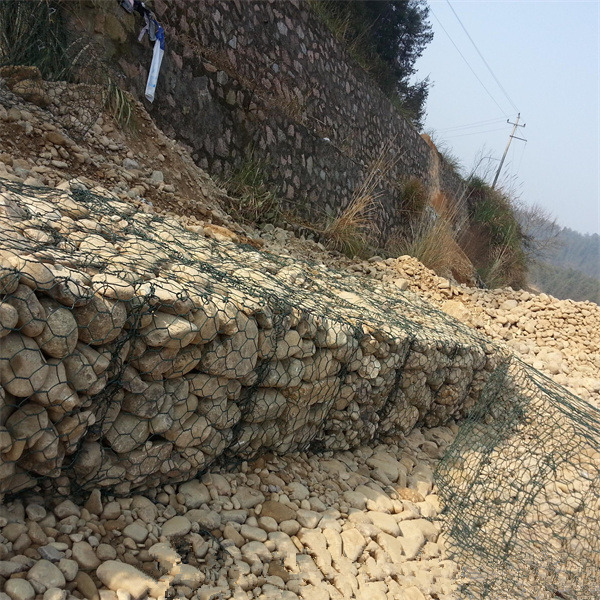Oct . 10, 2024 09:34 Back to list
Gabion Cage Wall Manufacturing and Supply Solutions for Durable Landscape Structures
Exploring Gabion Cage Wall Factories A Sustainable Solution for Modern Construction
In the realm of modern construction, sustainability has become a focal point, fostering innovative solutions that blend functionality with environmental stewardship. One such solution is the gabion cage wall, a structure that utilizes wire mesh cages filled with rocks, stones, or recycled materials to create durable and eco-friendly barriers. This article delves into the emergence of gabion cage wall factories, their manufacturing processes, benefits, and the role they play in contemporary construction projects.
The Concept of Gabion Walls
Gabion walls have been used for centuries, originating from the Italian word gabbione, meaning big cage. Initially employed for military purposes and erosion control, the use of gabions has expanded over the years to include a variety of applications, from landscaping to noise barriers and flood control. The basic principle of a gabion wall is simple the wire mesh cages are filled with sturdy materials, providing a strong, flexible structure capable of withstanding environmental stresses.
The Manufacturing Process
Gabion cage wall factories utilize specialized techniques to produce high-quality gabion products. The process typically begins with the sourcing of raw materials, including high-tensile steel for the wire mesh and a variety of stones or recycled materials for filling. Local sourcing of materials not only reduces transportation costs but also supports local economies and minimizes the overall carbon footprint of the production process.
Once the materials are gathered, the wire mesh is cut and welded into desired sizes and shapes, creating a robust framework. Advanced machinery ensures that the cages are uniform and structurally sound. After framing, the mesh cages are filled with selected materials, which can vary depending on the wall's intended use and aesthetic preferences. Some factories offer custom filling solutions involving colored stones or recycled plastics, appealing to environmentally conscious consumers.
gabion cage wall factory

Benefits of Gabion Cage Walls
Gabion cage walls present numerous advantages, making them a popular choice among architects and engineers. First and foremost, they are environmentally friendly. The use of natural materials not only reduces the demand for concrete and other environmentally taxing products but also allows for the integration of local ecosystems. The spaces between stones can foster vegetation growth, creating a natural habitat for wildlife.
Moreover, gabion walls are highly durable and require minimal maintenance. Unlike traditional walls that may crack or erode over time, gabions can adapt to shifting soils and water pressures, making them ideal for areas prone to flooding or erosion. Additionally, their permeability allows for natural drainage, reducing the risk of water buildup and related damage.
From a financial perspective, gabion structures can be more cost-effective than conventional walls. The materials are often less expensive, and the quick installation process requires fewer labor resources. Factories are increasingly employing automated systems, further reducing production costs while enhancing quality control.
The Role of Gabion Cage Wall Factories in Sustainable Development
As the world leans towards sustainable construction practices, gabion cage wall factories play an essential role in this transition. By providing eco-friendly solutions that are both functional and aesthetically pleasing, these factories are contributing to the development of resilient infrastructure. Whether used in urban settings to create beautiful landscapes or in rural areas for effective erosion control, gabion walls are becoming a cornerstone of sustainable building projects.
In conclusion, the growing prominence of gabion cage wall factories reflects a shift in construction philosophy, one that prioritizes sustainability, durability, and cost-effectiveness. As we continue to face the challenges of climate change and environmental degradation, innovations like gabion walls stand as a testament to how the construction industry can evolve to meet contemporary demands. By embracing such sustainable practices, we pave the way for a greener future, ensuring that our built environments harmonize with nature rather than disrupt it.
-
The Role of Galvanized Gabion Mesh in Riverbank Protection
NewsJun.26,2025
-
The Role of Gabion Basket Raised Bed in Sustainable Gardening
NewsJun.26,2025
-
Quality Assurance of Wire Mesh Gabion Baskets
NewsJun.26,2025
-
Installation Guide for Welded Gabion Box
NewsJun.26,2025
-
How to Choose the Right Gabion Box
NewsJun.26,2025
-
Different Types of Gabion Wire Mesh
NewsJun.26,2025
-
Why PVC Coated Gabion Mattress Is the Best Solution for Long-Term Erosion Control
NewsMay.23,2025






